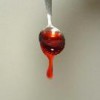Abstract
Honey has been used for medicinal purposes for thousands of years. It is rich in sugars such as glucose and fructose, but it also contains small amounts of vitamins, minerals, amino acids, and antioxidants such as phenolic acids and flavonoids. These nutrients help to make honey a unique, natural health product. Its market niche as a health product is growing, and current research supports the potential of honey as a medicinal product. This 3-page fact sheet describes health aspects of honey deriving from the floral source and color, beneficial compounds, anti-microbial properties, and anti-inflammatory properties. Written by Sara Marshall, Liwei Gu, and Keith R. Schneider, and published by the UF Department of Food Science and Human Nutrition, April 2015.
References
Alvarez-Suarez, J. M., Tulipani, S, Díaz, D, Estevez, Y, Romandini, S, Giampieri, F, Damiani, E, Astolfi, P, Bompadre, S, and Battino, M. (2010). Antioxidant and antimicrobial capacity of several monofloral Cuban honeys and their correlation with color, polyphenol content and other chemical compounds. Food and Chemical Toxicology, 48(8), 2490-2499. https://doi.org/10.1016/j.fct.2010.06.021
Aruoma, O. I. (1998). Free radicals, oxidative stress, and antioxidants in human health and disease. Journal of the American Oil Chemists' Society, 75(2), 199-212. https://doi.org/10.1007/s11746-998-0032-9
Baltrušaitytė, V., Venskutonis, P. R., & Čeksterytė, V. (2007). Radical scavenging activity of different floral origin honey and beebread phenolic extracts. Food Chemistry, 101(2), 502-514. https://doi.org/10.1016/j.foodchem.2006.02.007
Bogdanov, S., Jurendic, T., Sieber, R., & Gallmann, P. (2008). Honey for nutrition and health: a review. Journal of the American College of Nutrition, 27(6), 677-689. https://doi.org/10.1080/07315724.2008.10719745
Estevinho, L., Pereira, A. P., Moreira, L., Dias, L. G., & Pereira, E. (2008). Antioxidant and antimicrobial effects of phenolic compounds extracts of Northeast Portugal honey. Food and Chemical Toxicology, 46(12), 3774-3779. https://doi.org/10.1016/j.fct.2008.09.062
Gheldof, N., & Engeseth, N. J. (2002). Antioxidant capacity of honeys from various floral sources based on the determination of oxygen radical absorbance capacity and inhibition of in vitro lipoprotein oxidation in human serum samples. Journal of agricultural and food chemistry, 50(10), 3050-3055. https://doi.org/10.1021/jf0114637
Jeffrey, A. E., Echazarreta, C. M. (1996). Medicinal uses of honey. Rev Biomed, 7, 43-49.
Kato, Y., Fujinaka, R., Ishisaka, A., Nitta, Y., Kitamoto, N., & Takimoto, Y. (2014). Plausible authentication of manuka honey and related products by measuring leptosperin with methyl syringate. Journal of agricultural and food chemistry, 62(27), 6400-6407. https://doi.org/10.1021/jf501475h
Marshall, S. M., Schneider, K. R., Cisneros, K. V., & Gu, L. (2014). Determination of Antioxidant Capacities, α-Dicarbonyls, and Phenolic Phytochemicals in Florida Varietal Honeys using HPLC-DAD-ESI-MS n. Journal of Agricultural and Food Chemistry, 62(34), 8623-8631. https://doi.org/10.1021/jf501329y
Molan, P. C. (2002). Re-introducing honey in the management of wounds and ulcers-theory and practice. Ostomy Wound Management, 48(11), 28-40.
Molan, P. C. (2001). Potential of honey in the treatment of wounds and burns. American journal of clinical dermatology, 2(1), 13-19. https://doi.org/10.2165/00128071-200102010-00003
Saarinen, K., Jantunen, J., & Haahtela, T. (2011). Birch pollen honey for birch pollen allergy-a randomized controlled pilot study. International archives of allergy and immunology, 155(2), 160. https://doi.org/10.1159/000319821
Taylor, C. (1999). The United States Honey Industry Marketing and Future Outlook. Economic Research Service, United States Department of Agriculture.
TIPS. (2005). Trade Information Brief: Honey.
Tonks, A. J., Cooper, R. A., Jones, K. P., Blair, S., Parton, J., & Tonks, A. (2003). Honey stimulates inflammatory cytokine production from monocytes. Cytokine, 21(5), 242-247. https://doi.org/10.1016/S1043-4666(03)00092-9
Vallianou, N. G., Gounari, P., Skourtis, A., Panagos, J., & Kazazis, C. (2014). Honey and its anti-inflammatory, anti-bacterial, and anti-oxidant properties. General Med, 2(2) https://doi.org/10.4172/2327-5146.1000132

